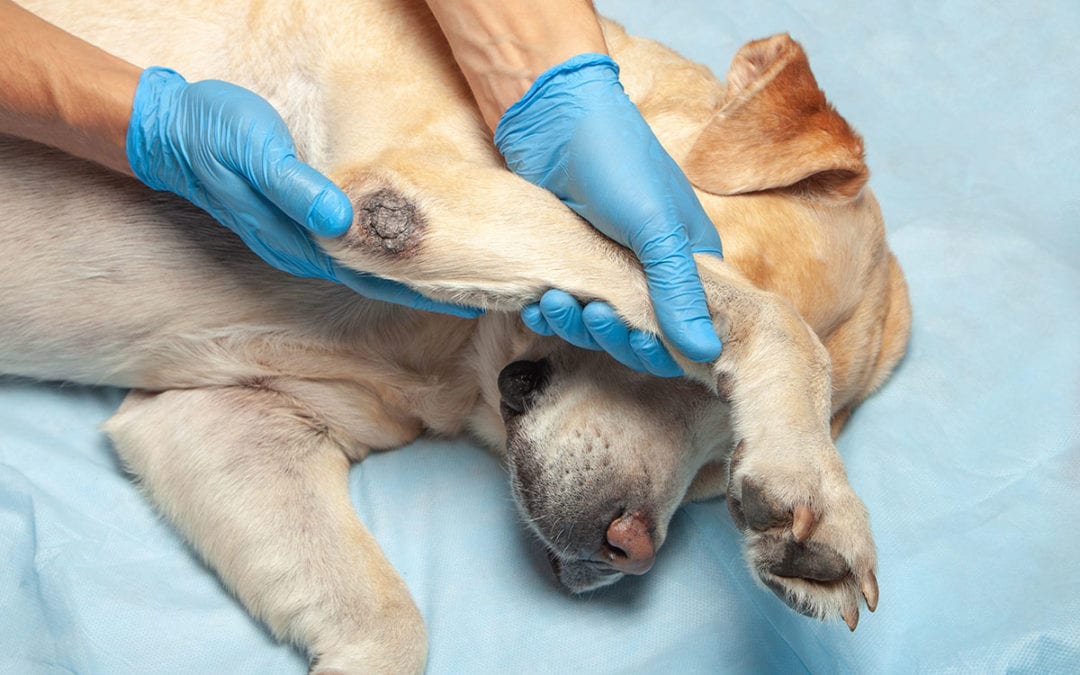Great question from Joe in New Albany – “What do I do about a bump on my pet?”
Mass, growth, lump, and things that go bump on your pet! Of course, whenever you feel a lump or bump on your pet, you should investigate! Patients are presented for a variety of lumpy, bumpy reasons.
Is it a tick? Even in January, we are seeing ticks on pets! If it is a tick, remove it. If you aren’t using tick protection on your pet, you should be. If you are using tick protection, you need a better one.
Is it a nipple? (Males or females)
Is your dog a male (neutered or unneutered) and are the bumps the bulbourethral gland at the base of the dog’s penis?
Has your pet gained a bit of weight and are the lumps near the hips? They may be paralumbar fat pads.
Are the lumps fat pads between the hind limbs?
Has your pet lost weight or lost muscle, and you are feeling a bony prominence that used to be hidden by muscle and fat?
Is the lump painful to the touch and is your pet feeling poorly? It may be an abscess.
OR is it another growth, mass, lump or bump? The best way to be sure is to come to see us at Gahanna Animal Hospital. We can tell you.
We can recommend a useful tick prevention product.
We can tell you about the bulbourethral gland- if you’re reading this, I’ll tell you now, and it is nothing to worry about. The dog is excited or maybe has to pee, and it will go away. Then come back again the next time he’s excited or maybe has to pee…
If your dog is gaining weight and has new fat pads, let us talk about why that may have happened, and what to do next. Yes, it may mean there are diet changes and lifestyle changes for the pet to increase his health, but some fat pads are indicators of disease and should be checked by a Gahanna Vet.
If your pet has lost weight or muscle, a trip to the vet is definitely in order.
If your pet has an abscess, let us help! We can help with the infection and the pain because these are hurty bumps for sure!
And, if it is another lump, bump, mass or growth, please come see us. The appearances of some masses lead a veterinarian to believe they are of a certain type. For example, adenoma, lipoma, wart, cyst, and abscess are all bumps that have clues that help identify them. These are all usually benign masses, benign, meaning not harmful, or not malignant cancers.
But appearances can be deceiving. As they say, “even salt looks like sugar.”
So, often we will recommend making sure the appearance matches the actuality by taking a small sample with a needle and a syringe. This is called a “fine needle aspirate.” We will recommend a fine needle aspirate for most masses to see if we can identify the cell population that makes up the mass. A fine needle aspirate is well tolerated by most pets, with low-stress handling, petting, and treats.
If it is a cyst, we often will know as soon as we put in the needle, and can frequently empty the cyst out at the appointment. Cysts will often re-form in time.
If it is an abscess, we can sometimes relieve some of the pressure of the pus, and get it cleaned up. We will usually put your pet on an appropriate antibiotic and often pain medication as well.
If it is an adenoma, wart or lipoma (benign fat tumor), we will discuss what to watch for and expect as well as options for taking care of problems that may arise from these otherwise benign masses.
Sometimes your pet will have a mass that we need to know more about before we can present you with a plan. We may recommend taking a radiograph (x-ray) if we are suspicious that the mass originates with bone or cartilage. Or we may take the cells from the fine needle aspirate, put them on slides, stain the slides and have a look under a microscope. After a look at the slides, we may know exactly what it is, and how to treat it. Or, it may need no treatment at all!
Alternatively, we may not know what cell population we are seeing, or what that population means for your pet. In that case we may recommend sending the samples to the cytologist. This is a doctor that specializes in identifying cell types. The vet may also recommend removing the mass and having it analyzed at the lab.
This analysis can help us form a plan of how to proceed for the better health of your pet.
So, if you find a bump on your pet, investigate! Gahanna Animal Hospital has the detectives that can identify what it is and help you make decisions on what to do next. We can even remove that tick ASAP, I agree, they are icky!
If you have a question for “Ask a Gahanna Vet,” simply send your question to clients@gahannaanimalhospital.org and put “Ask a Gahanna Vet” in the subject line.

